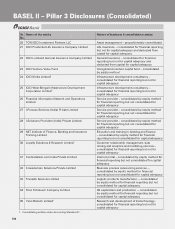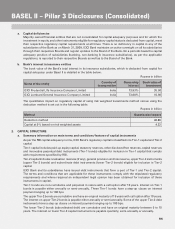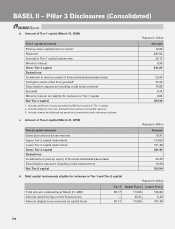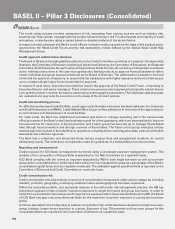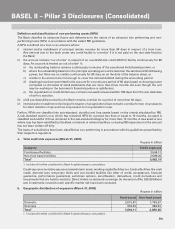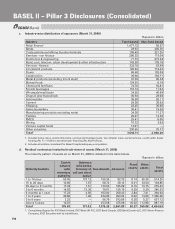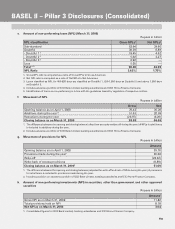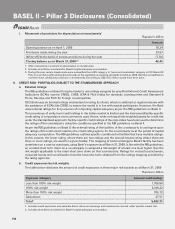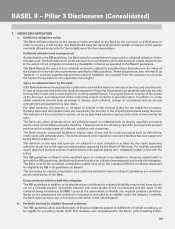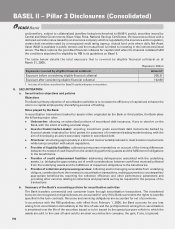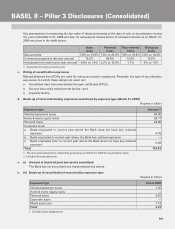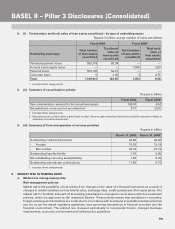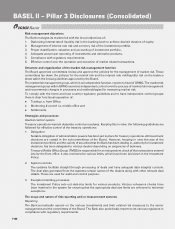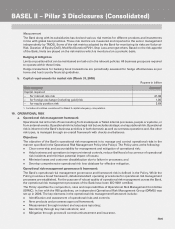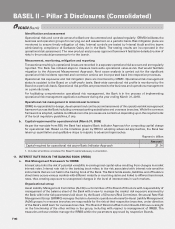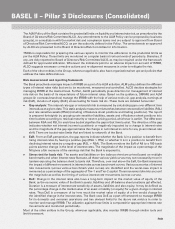ICICI Bank 2009 Annual Report Download - page 168
Download and view the complete annual report
Please find page 168 of the 2009 ICICI Bank annual report below. You can navigate through the pages in the report by either clicking on the pages listed below, or by using the keyword search tool below to find specific information within the annual report.
F94
i. Movement of provisions for depreciation on investments1
Rupees in billion
Amount
Opening balance as on April 1, 2008 16.24
Provisions made during the year 33.97
(Write-off)/(write-back) of excess provisions during the year (7.78)
Closing balance as on March 31, 20092,3 42.43
1. After considering movement in appreciation on investments.
2. Includes all entities considered for Basel II capital adequacy computation.
3. During the year certain investments were reclassified from AFS category to ‘loans and receivables’ category in ICICI Bank UK
PLC, in accordance with ammendments made to the applicable accounting standards in October 2008. Had this reclassification
not been done, additional provisions on investments amounting to US$ 10.5 million would have been done.
6. CREDIT RISK: PORTFOLIOS SUBJECT TO THE STANDARDISED APPROACH
a. External ratings
The RBI guidelines on Basel II require banks to use ratings assigned by specified External Credit Assessment
Institutions (ECAIs) namely CRISIL, CARE, ICRA & Fitch (India) for domestic counterparties and Standard &
Poors, Moodys and Fitch for foreign counterparties.
ICICI Bank uses an internal ratings mechanism for rating its clients, which is validated at regular intervals with
the assistance of ECAIs like CRISIL to ensure the model is in line with market participants. However, the Bank
uses external ratings for the purposes of computing capital adequacy as per the RBI guidelines on Basel II.
The prevalence of entity level credit ratings in the Indian market is limited and the instrument/facility-specific
credit rating of corporates is more commonly used. Hence, while arriving at risk-weighted assets for credit risk
under the standardised approach, facility-specific credit ratings of the corporates have been used to determine
the ratings of the counterparty using the conditions specified in the RBI guidelines on Basel II.
As per the RBI guidelines on Basel II, the external rating of the facilities of the counterparty is contingent upon
the ratings of the instrument rated by the credit rating agency for the counterparty as at the period of capital
adequacy computation. The RBI guidelines outlines specific conditions for facilities that have multiple ratings.
In this context, the lower rating, where there are two ratings and the second-lowest rating where there are
three or more ratings, are used for a given facility. The mapping of external ratings to Bank’s facility has been
undertaken on a case by case basis, using Bank’s exposure as at March 31, 2009. In line with the RBI guidelines,
an unrated short term claim on a counterparty is assigned a risk weight of at least one level higher than the
risk weight applicable to the rated short term claim on that counterparty. Ratings for mutual fund schemes,
corporate bonds and securitisation tranches have also been obtained from the ratings mapping provided by
the rating agencies.
b. Credit exposures by risk weights
The table below discloses the amount of credit exposures in three major risk buckets as at March 31, 2009
Rupees in billion
Exposure category Amount outstanding1
Less than 100% risk weight 1,758.84
100% risk weight 3,189.22
More than 100% risk weight 706.73
Deductions 27.51
Total25,682.31
1. Includes credit exposures and excludes direct claims on sovereign and investments covered under specific market risk.
2. Includes all entities considered for Basel II capital adequacy computation.
BASEL II – Pillar 3 Disclosures (Consolidated)


